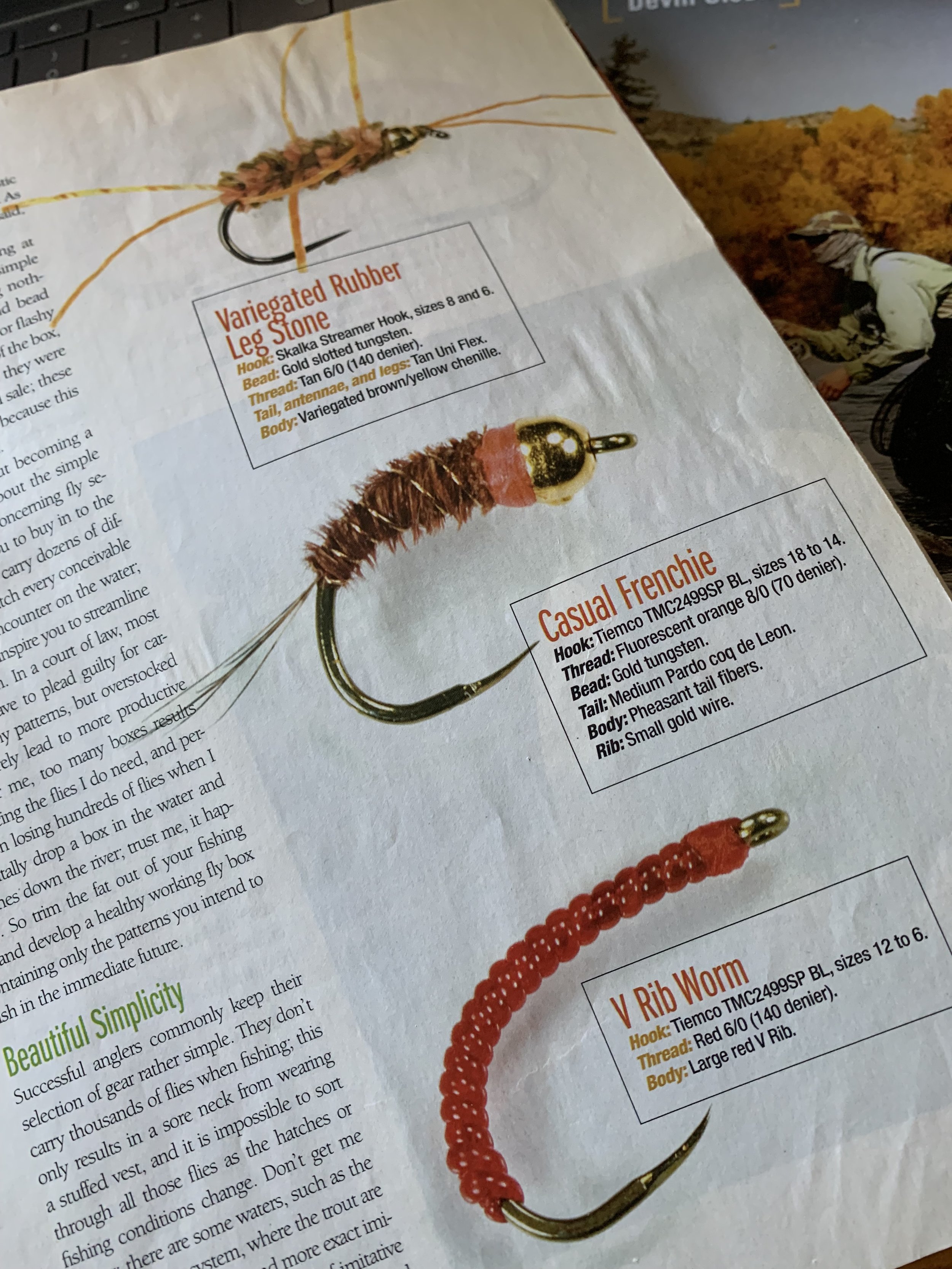Go To The Source
When I was a kid, my older brother John gave me advice. He told me, “Go to the source.”
I pass this on whenever I can.
I’m a 9th grade biology teacher, so I field a lot of questions. Some I answer. For others, I recommend students go to the source.
Have a question about credits and setting your schedule for next year? Go to the source. Talk to your guidance counselor. They are the expert here. Big history paper due? Go to the source. Consult our librarian. No one knows our research tools better. Question about an upcoming bio test? That one I answer.
Want to learn how to contact nymph in 2022? Go to the source. Read George Daniel, Devin Olsen, and Domenick Swentosky.
Contact nymphing and its variations go by many names. These include: tight line nymphing, Czech nymphing, Polish nymphing, French nymphing, or what’s most commonly used, European nymphing. Contact nymphing usually involves long rods, long leaders, and weighted, multiple fly rigs. You’re fishing at close range and are tight to your flies. Drifts are relatively short and a bright section built into the leader, called a sighter, helps with strike detection. This nymphing style gets flies down to a trout’s feeding zone and keeps them there. And if reasonable imitations are drifting in the feeding zone, there’s a good chance they’ll get eaten. It can be incredibly effective. That’s old news.
My point is that its popularity has caused the internet to be saturated with information about it. But much of that information is recycled from the sources mentioned above. So many of the Euro nymphing questions that I see discussed on message boards or hear posed on podcasts, have already been expertly covered by Daniel, Olsen, and Swentosky.
But this speaks to a larger problem. We’re all bombarded with too much information. And a lot of that information may be coming from people that aren’t qualified. The sources I recommend here are as qualified as you can get.
My oldest brother Dave also gave me some advice. While talking fishing, he said, “Tune out the noise and just go.”
The internet is full of noise. If you are serious about learning, think critically about your information sources. It will eliminate a lot of noise.
Then, once your choices are made, read hard. Finally, with that foundation, get out and fish hard.
Sources:
Daniel, George. Dynamic Nymphing. Stackpole Books, 2012.
Daniel, George. “Confidence Flies.” Fly Tyer, vol. 18, no. 1, Spring 2012, pp. 30 - 37.
Olsen, Devon. Tactical Fly Fishing. Stackpole Books, 2019.
Swentosky, Domenick. troutbitten.com



